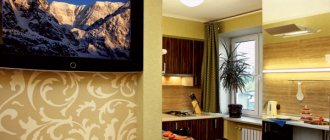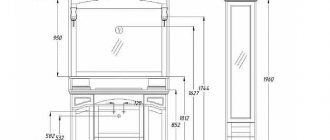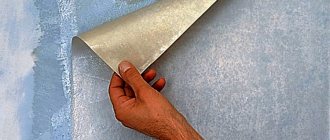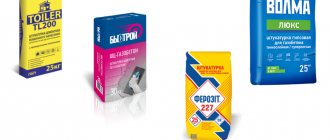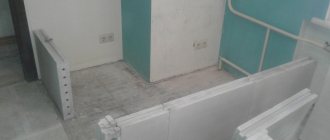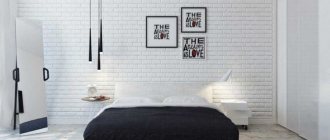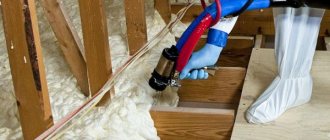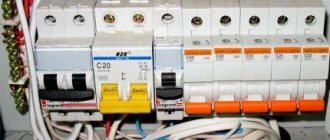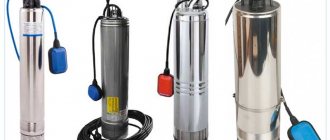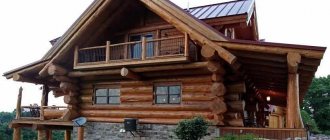Fiberglass wallpaper is a universal finishing material with unique properties. Despite this, anyone can work with glass wallpaper, even a beginner. And although the process is practically no different from gluing ordinary trellises, fiberglass wallpaper has its own characteristics. How to glue glass wallpaper and what the whole process consists of will be discussed further.
Fiberglass - what is it and what are its features?
From the name itself it is clear what material they are made of. These are secondary raw materials: glass and sand, ground into crumbs. The composition may include dolomite and limestone. Under the influence of high temperature (1200 degrees), all components melt and the thinnest and lightest thread or yarn is formed from them. Glass wallpaper is woven from it. Products can be smooth or embossed, with or without patterns. Width 50 cm and 1 m, the roll has 25 or 50 m of fabric.
Material Features:
- Ecological cleanliness. This is a harmless material that does not harm health and does not emit harmful substances. They are used in children's rooms.
- Excellent external characteristics, look rich and noble.
- Strong, reliable and durable, will last about 30 years.
- They do not burn and are not afraid of moisture, so they can be used in bathrooms and kitchens.
- They are antistatic and do not collect dust.
- Easy to care for, can be washed with a damp cloth.
- They are vapor permeable, the walls will breathe.
- Microorganisms do not affect the material, fungus and mold do not develop.
- Thanks to high-quality adhesion, they are perfectly retained on the wall surface. In this case, the material of the walls is not important: concrete, putty, plaster, wood, metal, chipboard, etc.
- If desired, the color of the glass wallpaper can be changed by simply painting it. Depending on the type of wallpaper and the quality of the paint, the canvas can be painted 5–10 times.
The disadvantage of the products is their high cost, not such a diverse range as their analogues, as well as the need to work in protective clothing and a respirator, which will protect against fiberglass particles.
Features of fiberglass wallpaper.
Fiberglass was invented in Germany. Back in the 20s. In the 20th century, a small glass factory in the city of Steinach in Thuringia began to use glass threads to produce durable fabric with good thermal insulation properties. They were patented under the name "Vitrulan", from two Latin words for glass and wool. In 1931, the idea was to use glass threads not only for industrial purposes, but also to create wall coverings. This is how the first glass wallpaper appeared. In the middle of the 20th century, production appeared in Sweden, then in other European countries, the USA and China. And the Vitrulan Textileglass company still produces glass wallpaper and fiberglass (“webs”) of the highest quality. They are known all over the world and are sold, including in Russia.
Tools and materials for work
The arsenal for work is simple, which reduces the cost of tools. In addition, even a beginner can work with them. No need to have professional skills. In the process we will need:
- glass wallpaper and glue for them;
- primer, roller and brush;
- rubber roller or plastic spatula;
- metal spatula, mounting knife;
- tape measure, level, pencil;
- container for preparing glue;
- brush for applying glue to the surface;
- if the ceiling is high, then you need a stool, stepladder or sawhorse;
- clean rags and a sponge to remove glue residue;
- protective clothing: goggles, respirator, closed clothing and gloves.
Preparing the oven
1. The whitewash layer must be removed, not because of the characteristics of the wallpaper itself, but because any glue, impregnating the whitewash, makes it heavier and denser. Because of this, the connection between it and the surface covered with it is lost. Gluing any material to whitewash will lead to failure.
2. Sealing cracks and microcracks with oven mixture.
3. Leveling the oven surface.
Before wallpapering, all layers of preliminary preparation must be completely dry.
Choosing glue
Simple DIY wallpaper glue will not help here, since it will not be able to provide the best adhesion and hold the canvas. The same can be said about the universal and best ones. What glue for glass wallpaper should it be? You can glue glass wallpaper using special compounds for fiberglass. As an option, substances based on PVA and analogues. The fact is that the products are dense and heavy, so the adhesive must hold all the weight. Otherwise, bubbles will form and the canvas will fall off.
Finding a suitable adhesive is easy; it indicates that it is used for glass wallpaper. The price for such adhesives is not small, but what can you do, other analogues simply will not work. Ideally, use glue and wallpaper from the same well-known manufacturer. Thanks to this, the best service life can be guaranteed.
Important! If the glue contains starch, then you can’t count on high quality. It is better to refuse such a purchase, since the substance will not support the weight. But the PVA in the composition means that the material can be taken.
Removing glass wallpaper and removing glue.
Fiberglass, as a durable and strong material, also has a drawback. If simple repainting is no longer enough and you plan to significantly change the interior, then high-quality glue connects them to the wall so strongly that removing the wallpaper requires some effort. If you use universal wallpaper glue, this problem will not arise. Most likely, the canvas soaked in water will come off the wall after a while and can be easily removed with a spatula.
Glue for glass wallpaper based on modified starch interacts so tightly with the canvas, especially thin ones, that together with it it practically becomes part of the wall. There are special solutions that are applied to all possible joints and to the outer surface of the wallpaper. They help remove old wallpaper in parts. If this method does not work, then cleaning the walls will require abrasive materials (for example, a drill with a special attachment) and lengthy mechanical work.
Vitrulan VPP 200 fiberglass will help you approach the problem from the other side. This is an absolutely smooth and very dense material that does not have a textured print, so coloring does not cause as much damage to it as textured fiberglass, and it is easier. Accordingly, replacement of the coating may be required less frequently.
Preparing the surface
Regardless of the surface on which the glass wallpaper will be glued, it needs to be prepared. Thanks to this, you can achieve maximum quality of pasting. The service life also increases.
The preparation of walls includes the following steps:
- Removing old finishing materials - wallpaper, putty, paint. Wallpaper made of paper can be moistened with water and easily removed with a spatula. The same goes for plaster. And the paint is treated with a construction hairdryer, followed by removing the residue from the wall.
- Next you need to evaluate the walls for damage, cracks and unevenness. They are sealed with putty. If the differences are more than 5 mm, then repeated puttying is carried out. After puttying, the layer is rubbed down with fine-grained sandpaper.
- Dirt, grease stains and other inclusions on the surface are removed. It is cleaned of dust and dirt.
- The final stage is priming. The substance will reduce glue consumption, improve adhesion and protect the wall. It is important to process all areas without gaps. It is best to use a roller and lubricate hard-to-reach areas with a brush.
- When the first layer has dried, you can apply the second. Drying time is indicated on the packaging. Subsequent work can be performed after the second layer of primer has dried.
When working with drywall, you need to use putty to treat the joints and hide the caps from the screws. The joints are glued with sickle mesh.
Overview of the material
Fiberglass is made from mineral fiber by pressing under high heat. Threads fused with organic resin under pressure form a so-called “spider web” with high tensile strength. Thanks to this property, the canvas is used to reinforce plasterboard, plastered surfaces or block masonry.
The main criterion for choosing a fibrous web is its density (in g/sq.m):
- 25 – the thinnest ceiling option for smoothing and reinforcing the surface before painting;
- 40 - a universal type with sufficient strength of fiberglass for gluing ceilings and walls, which explains the high level of demand for material for repairs in the residential sector;
- 50-65 – due to its increased density, this strong material is relevant for finishing structures that are subject to periodic or constant vibration loads (workshop, production site).
Thick fiberglass wallpaper Source allegroimg.com
The choice in favor of “spider web” is also justified by such consumer properties as:
- resistance to temperature and humidity changes;
- inertness to corrosion, household chemicals, biological activity (bacteria and fungi);
- durability;
- environmental friendliness and antistatic;
- good vapor permeability (breathability).
The canvas is sold in the form of rolls 1 m wide and up to 50 meters long. The outer side is the wrong side, the inner side is the front side with a smoother surface. The material is not used as an independent coating. It is needed for additional strengthening of walls and ceilings, masking small cracks and chips, and preparing the surface for painting.
See also: Catalog of companies that specialize in finishing materials and related work
Preparation of glue
The best option is to follow the instructions on the package. Preparation comes down to the following steps:
- The required amount of water is poured into the bucket.
- Using a stick or spatula, the water is mixed in a circle to form a funnel. Glue is poured into it in a thin stream in one stream, without interruption, constantly mixing the contents.
- When the composition thickens and there are no lumps in it, you need to leave it for 5-10 minutes so that it swells enough.
- The ideal consistency of glue for glass wallpaper is something like thick jelly. If there are lumps, they are removed.
- If the substance is very thick, you can add more water and mix thoroughly. But you don’t need to make the glue too liquid so that the wallpaper adheres well to the surface.
For beginners, there is an optimal option - not dry, but ready-made glue. All you have to do is open it and start working. True, its cost is slightly higher.
Self-adhesive glass wallpaper is also on sale. To stick them on the wall you just need to wet the sticky layer.
Advantages of fiberglass
Questions are being asked more and more often: is fiberglass needed for wallpaper? If you understand what advantages it has, the problem will solve itself. There are several manufacturing options. Fiberglass is made by pressing. The strength of the material is not the highest, but if you handle it with care, then using it as a finishing coating is quite justified. We can talk about the following advantages:
- can be used as a reinforcing mesh if the pasting is carried out correctly: all imperfections of the walls will be hidden;
- the material is moisture resistant and is not affected by fire and aggressive substances;
- these are hypoallergenic materials;
- easy to clean and use in rooms where optimal humidity is always maintained;
- the material is absolutely environmentally friendly.
Gluing glass wallpaper
Now let's look at how to properly glue glass wallpaper. In fact, the work is no different from gluing ordinary trellises. It all comes down to marking, cutting the canvases and fixing them on the surface. Particular attention is paid to joints. Step-by-step instructions on how to glue fiberglass wallpaper:
- First you need to put on a protective suit. The main thing is that there are no unprotected areas of skin left. The eyes and respiratory organs are also protected.
- It is necessary to ensure optimal temperature conditions inside the food, which is in the range of 17–24 degrees. Drafts are not allowed.
- Next, depending on the height of the ceiling, strips are cut. A straight starting line is drawn on the wall from the window or door. Then, in steps equal to the width of each stripe, other lines are drawn. They will help you navigate and glue the glass wallpaper perfectly evenly.
- It is better to cut glass wallpaper using scissors, since the mounting knife provokes the formation of small particles.
- Glue is applied to part of the wall using a brush or roller. There should be no omissions.
- Then the strip is fixed in place. You need to start from the top, gradually pressing the glass wallpaper against the wall. While the glue has not set, you can adjust the position of the wallpaper according to the markings.
- The excess from above or below is cut off with a mounting knife under a spatula.
- Using a clean rubber roller or plastic spatula, remove air and excess glue from under the wallpaper. Residues of glue are wiped off with a sponge or damp cloth.
- When the first strip is pasted, you can fix the next one using the same pattern. There is no need to overlap at the joints. Thanks to the smooth edges, the gap will be invisible and neat.
The process is repeated until the entire room is covered. All you have to do is wait for it to dry and proceed to the next step if you were gluing glass wallpaper for painting.
We recommend that you read: What to do if the wallpaper comes off.
How to cover a room with glass wallpaper
Fiberglass material is heavy, and special glue is required to stick it on. A large amount of glue applied to the wallpaper itself can damage it. Despite all their characteristics, they are capable of tearing, like any other. The most ideal way to stick them is to apply a layer of glue directly to the wall, and after placing the sheet, smooth it with a roller in the middle from top to bottom and to the sides from the middle.
This will eliminate the formation of air cushions and creases in the material.
Heat-resistant glass wallpaper, how to glue it to the stove,
if there was previously whitewash on it, such a question requires a detailed answer.
Dyeing process
Since wallpaper “breathes,” it is important to choose the appropriate paint that matches this parameter. This is what water-emulsion and water-dispersion compositions are. The best option would be a special paint made exclusively for glass wallpaper.
Painting is carried out in several successive stages:
- Using a roller, apply a thin layer of primer to the dried glass wallpaper. You need two coats with breaks to dry.
- Paint is applied to the dried primer. Here you also need to do two layers with breaks for drying. Coloring is no different from usual, so there should be no problems.
We do not recommend neglecting the primer after pasting with glass wallpaper. With it, the paint layer will not be so absorbed by the trellises, and adhesion will increase significantly. Here's everything you need to know to ensure the best quality wrap. The result is a beautiful, practical, reliable and durable coating. It can be washed and is antistatic, so its appearance will remain for many years.
Briefly about the main thing
Fiberglass is a building material for gluing walls and ceilings for the purpose of reinforcement, smoothing the surface and preparing the base for painting.
Glue for canvases can be liquid or powder with high adhesion to the mineral composition.
The consumption of adhesive is approximately 2 times higher than for working with other wallpaper, since it must completely saturate the fiberglass.
You can choose a specialized composition or PVA. It is recommended to add the latter to a solution of powdered glue.
Before painting, a thin layer of finishing putty must be applied over the “cobweb”.
Ratings 0
Preparing a wall made of fiberboard (MDF, chipboard)
Unlike polystyrene foam, finishing (cladding) panels made from wood waste absorb water well, so to level them and increase adhesion to the wallpaper backing, you can cover them with fiberglass using PVA glue or Bustilat.
After the glue has dried, the surface does not need to be treated with putty, provided that the texture of the fiberglass is not high-profile, but smooth.
When gluing, you should follow the same rules as when reinforcing insulation with fiberglass. Glue fiberglass sheets perpendicular to the wallpaper strips.
PVA emulsion can be added to the wallpaper adhesive selected for the wallpaper according to its thickness and type in a ratio of 1:50 - 1:25. This will significantly increase the adhesive properties.
What to choose?
What is better - Oscar or Kelid, Pufas or Cleo? The opinions of professionals differ on this issue. However, they all agree on one thing - these brands are definitely better than others. As can be seen from the review of adhesive mixtures from well-known brands, the difference in their properties is almost imperceptible, therefore the question of choosing between them is more a matter of taste than performance and ease of use. But in addition to the brands described, markets and stores offer a wide variety of products of this type.
Sometimes in the markets you can find, according to sellers, “super-quality glue” from America or Europe without any translation. To buy a mixture that is suitable specifically for fiberglass or glass wallpaper, you can rely on the markings.
Designations of polymer adhesives in different languages:
- in English (EN) - dispersion adhesive;
- in German (DE) – dispersionsklebstoff;
- in French (FR) - adhésif en dispersion.
If there is such a marking, the purchase can be made. Another point that influences the choice of glue is its consumption. This parameter is also important to know in order to calculate how many buckets/packs you need to buy.
Advice
It’s better not to experiment with unfamiliar manufacturers, because the glass wallpaper itself is not cheap. Preference should be given to well-known brands or those that have been tested through the experience of close friends or relatives.
Pasting wallpaper on brick and concrete walls
Typically, brick and concrete walls do not require any specific treatment before wallpapering. A layer of leveling plaster and finishing putty is sufficient. But, in some cases, a reinforcing material is used - fiberglass.
It is advisable to use fiberglass for putty in new, recently commissioned houses, in which the shrinkage process has not yet completed and there is a high probability of cracks appearing on the walls.
Thanks to its high strength characteristics, fiberglass glued to the wall will prevent the formation of cracks in the plaster and the tearing of the wallpaper above the crack. The second option for using high-profile fiberglass is gluing brick (concrete) walls painted with oil paint.
Not all wallpaper adhesives are capable of holding wallpaper on oil-based paints. Therefore, a painted wall needs preliminary putty. But putty, in turn, can also peel off from oil paint. To do this, reinforcing fiberglass should be glued to a painted surface using the same adhesives as when gluing to plastic panels. Before gluing the fiberglass, the painted surface should be treated with coarse sandpaper.
Criteria for qualitative composition
The quality of glue for glass wallpaper and any other heavy wallpaper is assessed by the following indicators:
- increased adhesion (adhesive ability);
- resistance to high humidity;
- its acid-base balance should be neutral, approximately 6-7;
- it must be environmentally friendly, safe for health, and not have a pronounced unpleasant aroma;
- the correct composition is resistant to fungus, hygienic, does not contain harmful substances;
- it is quite thick, viscous, sets quickly, and has a long shelf life.
Glass wallpaper in the interior
Conclusion
The job of gluing walls with glass wallpaper is quite simple if you use high-quality glue and comply with all technology requirements. The video in this article will help you understand some of the nuances of the topic under consideration in more detail.
Similar articles
- How to glue photo wallpaper: video instructions for installation with your own hands, is it possible to glue it to wallpaper, photo
1 How to choose the best option 2 How to organize the work 2.1 Preparatory activities 2.2 Technology of work 3 Conclusion Of all types of wall… - What paint to paint wallpaper for painting: instructions for painting, which one to choose, consumption, video and photo
1 Selection of material 1.1 Requirements for composition and base 1.2 Popular varieties 1.3 Ready-made product or tinting? 2 Application method 3 Conclusion… - Cork wallpaper.
How to glue cork wallpaper on walls correctly Many people want to make not only beautiful and high-quality renovations at home, but also to have it made from environmentally friendly materials….
